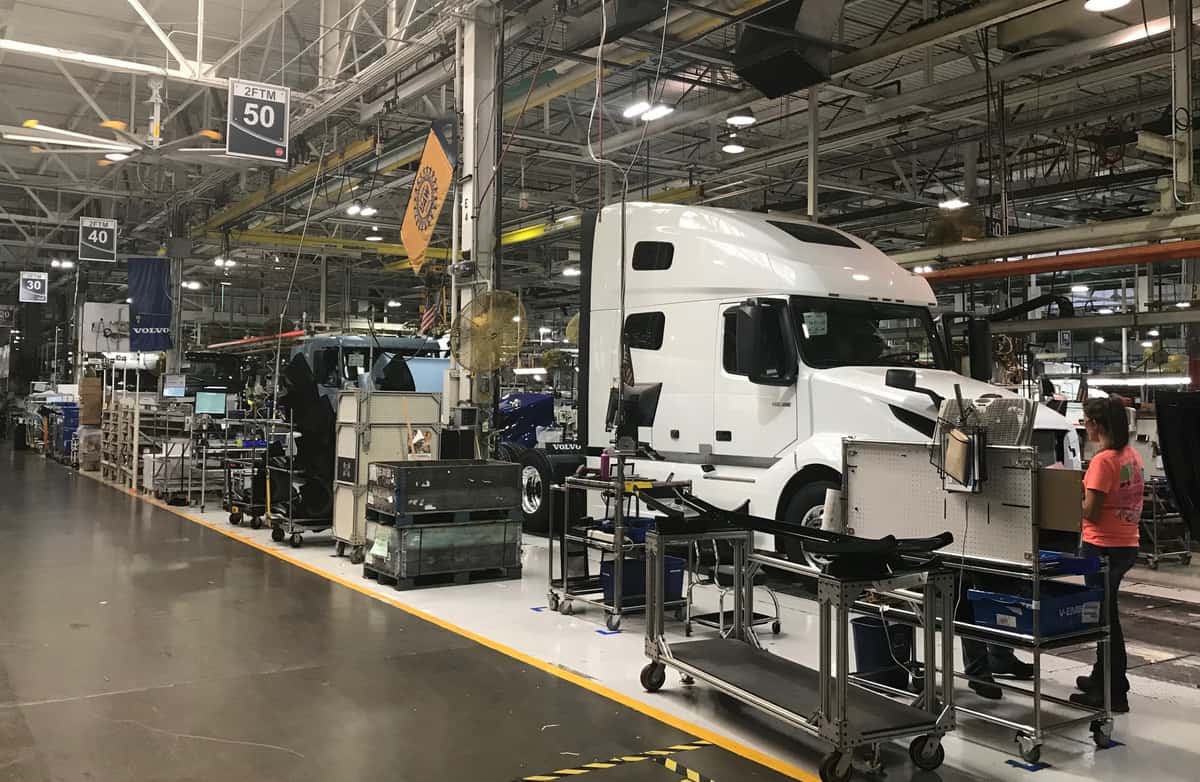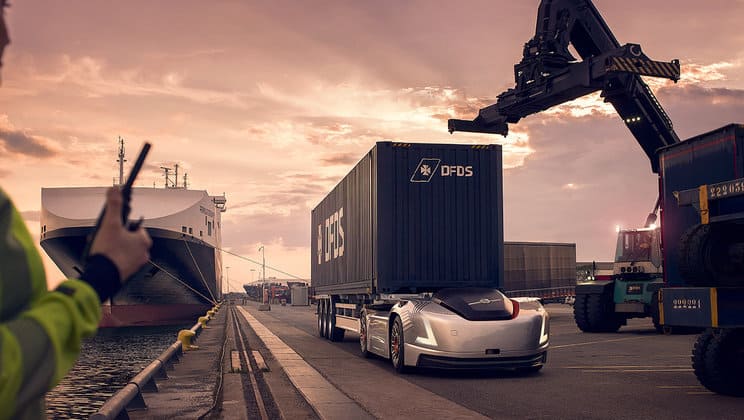Peter Voorhoeve recently passed his first anniversary as president of Volvo Trucks North America after five years running Volvo Group’s (OTC: VLVLY) Australian operations. During his brief tenure, Volvo’s market share is down nearly a percentage point. But he isn’t sweating it.
“For me, market share is a result, not an objective,” Voorhoeve said in an interview with FreightWaves at a recent Technology Day program at Volvo’s New River Valley assembly plant in Dublin, Virginia. “We strive for customer success and satisfaction.”
Volvo’s North America’s 9.6% share was down 0.7% at the end of July compared with 10.3% in the same period a year earlier. But the company projects Class 8 retail sales of 35,000 for the full year, the highest since 2015.
“I want to show Volvo Trucks North America is geared up for more, and whatever that can be without being ridiculous (and saying) ‘Oh, we have to have so much percent’ because I don’t believe in it,” he said. “I want to be the best business partner. I want our customers to be the most successful because then automatically, they’ll do more business with me.”
Consistent investment
Volvo is not seeking a partnership like Navistar International Corp. (NYSE: NAV), which recently closed a deal with Love’s Travel Stops & Country Stores to open service bays for International brand trucks, adding 326 locations to give it more than 1,000 basic service outlets.
“The quick answer is we have been investing for the past 10 years and we will not stop,” Voorhoeve said. “We are investing in our products and we are investing in the factory,”

In June, Volvo announced a $400 million expansion of the New River Valley complex that builds all its heavy-duty trucks for North America.
Autonomous projects
Volvo North America and its Swedish parent, Volvo AB, are piloting several autonomous truck applications. It is importing the European-developed Dynamic Steering system to North America next year, a key enabler of Level 2 partially automated driving.
In Norway, Volvo has six autonomous mining trucks transporting limestone from an open pit mine to a nearby port. The driverless trucks cover a five-kilometer stretch through tunnels between the mine and the limestone crusher.
In Brazil, self-steering, GPS-guided trucks follow sugar cane harvesters, taking care to stay in the harvester’s tracks and avoid damaging the next year’s crop.
In Japan, Volvo AB’s U.D. Trucks unit recently conducted multiple tests of Level 4 fully autonomous trucks at a sugar processing plant in the northern prefecture of Hokkaido.
In Sweden, its Vera autonomous yard tractor is hauling cargo from a logistics center to a port terminal in Gothenburg, part of a collaboration with ferry and logistics company DFDS. The autonomous, emission-free electric Vera could find its way to U.S. ports, but it needs a control tower and other infrastructure.

“There’s nothing preventing it,” Voorhoeve said. “But everything takes time. Vera is not a product that you put somewhere and then find your way.”
No Level 4 urgency
Volvo chooses its projects carefully, focusing on confined areas. Safety is paramount. Volvo is working with artificial intelligence chipmaker Nvidia in Gothenburg and Santa Clara, California, on the development of a flexible, scalable autonomous driving system.
Several startups are testing Level 4 fully autonomous long-haul trucks with a safety driver on board. Voorhoeve said moving from Level 2, where a driver is required to stay attentive, to Level 4 where a truck can perform most driving tasks without human involvement “is a relatively small step.” But it’s not an urgent one.
“I think larger corporations are investigating the business case for them,” he said, an apparent reference to market leader and Daimler AG (OTC: DDAIF) unit Daimler Trucks North America, which acquired Torc Robotics to accelerate its efforts. Daimler recently began testing Level 4 trucks on public roads in Virginia.
“If they go to Level 4, technologically we can do it,” Voorhoeve said. “But to bring it to market, you need interested parties (and) you need regulators. That is a complicated process.”







